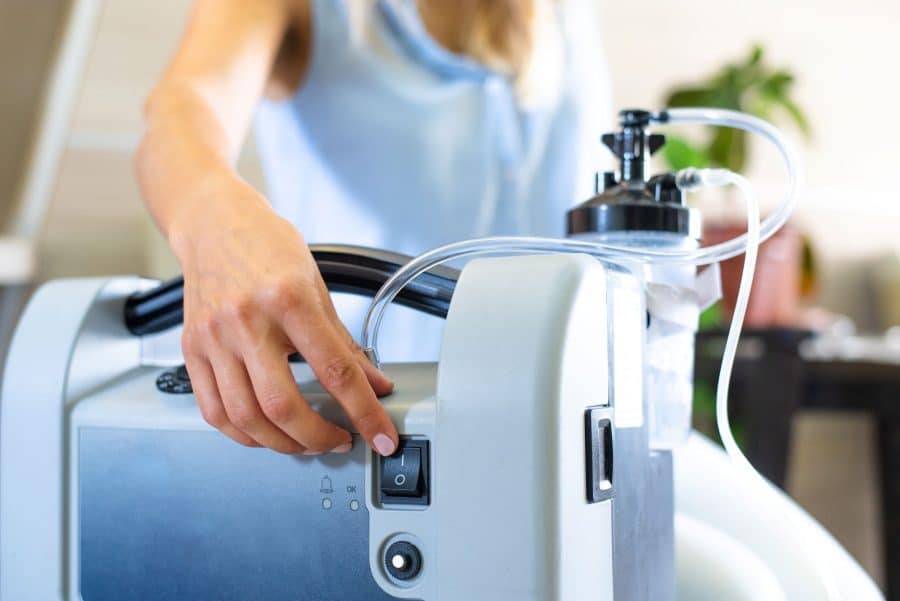The quality of care you provide your patients is essential as a caregiver. It determines your patients’ satisfaction and your career’s success. One factor that plays a significant role in the quality of caregiving is the tools and equipment used in the caregiving process.
According to Oxford Academic, approximately 120 million older Americans [mfn]https://academic.oup.com/gerontologist/article/60/Supplement_1/S41/5735605[/mfn] need care at home. Furthermore, technology and new emerging interventions could make a significant difference in their care.
Quality caregiving improves and maintains the health and well-being of patients. Whether patients need assistance due to illness, disability, or age-related conditions, it makes a difference to their welfare. More importantly, high-quality caregiving benefits patients, their families, caregivers, and the healthcare system as a whole.
Convert MS Word to PDF effortlessly. Preserve your document’s formatting and make it easy to share or print with a single click.
To understand more about the impact tools and equipment could have on the quality of care, continue reading below.
1. Using Tools Improves Overall Caregiver Efficiency
Having the right tools and equipment makes the caregiving process more efficient. It helps caregivers perform their tasks quickly and effectively, reducing the time to complete the caregiving process. Also, it allows them to attend to more patients, resulting in a better quality of care.
For example, a vital monitoring device could take exact measurements. It could even warn caregivers of any irregularities in the values.
Moreover, providing caregiving services can be physically and emotionally exhausting. For this reason, many caregivers could struggle with caregiver burnout. The correct tools and equipment can, nonetheless, help reduce caregiver burnout.
With the proper training on using these helpful aids, caregivers reduce the stress and exhaustion associated with caregiving. In itself, overwhelm could cause a safety hazard for both caregiver and patient.
2. Enhanced Patient And Caregiver Safety
Using appropriate tools and equipment, like those available from Nurse Rosie, could improve safety for both the caregiver and the patient as well. For example, if lifting equipment is used, there’s a lower risk of back injury to the caregiver.
Similarly, specialized tools such as feeding tubes reduce the risk of choking in patients with difficulty swallowing. Additionally, these tubes allow the precise delivery of nutrients without added stress for the caregiver.
One of the most significant benefits is improved patient health outcomes. Caregivers who provide quality care can help patients in the following ways:
- Manage their patient’s health conditions;
- Prevent complications and safety risks;
- Promote recovery in a safe environment; and the like.
More importantly, better patient care results in better health outcomes, reduced hospitalization, and improved quality of life.
3. Raising The Accuracy Of Patient Care
Accuracy is critical in caregiving—one more reason to use the highest quality tools and equipment. Without accurate readings for blood sugar, for example, caregivers could supply the incorrect dose of insulin.
Also, a pulse oximeter can accurately measure a patient’s oxygen levels, allowing caregivers to administer oxygen therapy promptly and effectively. Another category of home-based patient care that’ll benefit from the latest technology is the management of medications.
With medication reminder apps, patients and caregivers can accurately plan their schedules and take their medications. Inventions like these reduce patient incidents which provide further peace of mind.
Other advantages of raising the accuracy of patient care could include some or all of the below aspects of care:
- Reliability: Caregivers and their medical team can trust that the equipment will supply accurate information about the patient’s condition.
- Validity: Mistakes during record keeping and procedures could cost patients their lives. Tools and equipment help caregivers to avoid minor errors like misspellings, poor readability of handwriting, and transposing of numbers or letters.
- Relevance: Using specified fields on equipment could ensure that only the most helpful information remains available.
- Timeliness: Instead of searching for information on the patient’s condition in an emergency, the tools and equipment make the treatment process quicker. And it contributes to the accessibility of patient data.
- Legality: All data remains saved and unchanged per most countries’ laws. Personal information is relatively safe.
Patients and their families view healthcare facilities that provide quality caregiving services more favorably. Therefore, it enhances the caregiver’s reputation, increases referrals, and they receive more positive feedback.
4. Boosting The Comfort Levels Of Patients
Patients needing constant care oftentimes require more comfort. Extended bed rest or immobility could leave them with aching joints and muscles. Thus, adjustable beds and chairs can help patients maintain a comfortable position and avoid developing aches, pains, and bedsores.
Here are more ways caregivers can make patients more comfortable:
- Create a welcoming environment by keeping the tools and equipment clean and neat.
- Explain each procedure using tools and equipment, so patients and families understand the importance of using them.
- Incorporate tools and equipment as comfortably as possible according to the patient’s preferences.
- Simplify all routines and procedures by using the latest equipment with up-to-date features.
Boosting the patient’s comfort level increases the quality of their care too. Family satisfaction also improves by providing their loved ones with the necessary support. Both patients and their families could feel more confident about the care they receive, relieving some of the stress and replacing it with contentment.
5. Advancing The Cost-Effectiveness Of Caregiving
Caregiving could be an expensive process, depending on the level of care the patient needs. Having state-of-the-art tools and equipment may reduce the overall cost of care. There are various reasons for this, including the following:
- Reduce the need for additional staff by automating some functions.
- Eliminate the cost of treating complications during caregiving.
- Decrease paperwork and records by keeping them electronically.
- Minimize the time waiting for prescriptions by receiving them online.
- Empowering caregivers to provide more services independently instead of involving other professionals.
- Streamline daily tasks through scheduling apps.
- Shorten the time between noticing a problem and starting the appropriate treatment.
Henceforth, quality caregiving can be cost-effective. Caregivers can reduce the need for expensive hospitalization and long-term care by providing efficient, effective care. Plus, it can result in significant cost savings for patients and healthcare systems.
In Conclusion
Adding the latest healthcare tools and equipment [mfn]https://www.forbes.com/sites/robertmauterstock/2019/02/01/3-breakthroughs-in-technology-to-help-caregivers/?sh=29df92ecbe6e[/mfn] could significantly impact the quality of the caregiving process. As a caregiver, investing in appropriate tools and equipment is crucial.
More so, the families of the patient have more trust in the quality of care their loved ones receive. Arguably, quality of care and the tools or equipment go hand in hand – it’s clear how everyone will benefit from combining these two. Patients, families, caregivers, and healthcare facilities will all agree.





